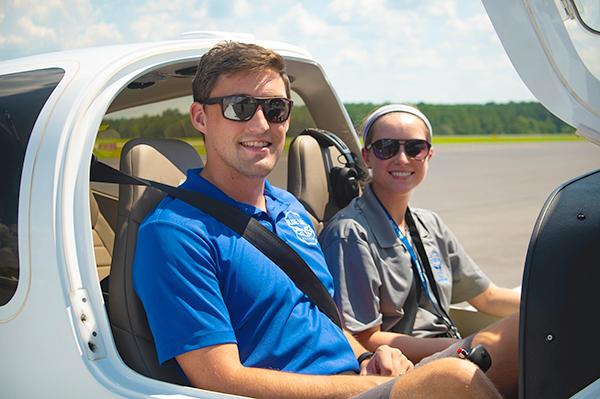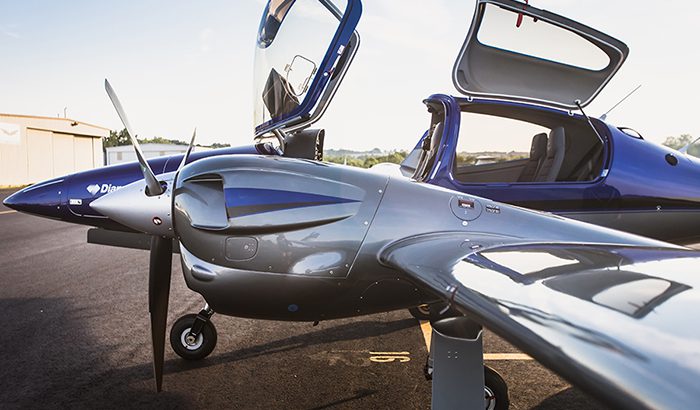By Trey Walters
Travelers across the United States may have noticed an increase in flight delays and cancellations, as well as a reduction in the number of routes, but they might need to learn the cause behind these inconveniences. The airline industry is currently experiencing a massive pilot shortage that, if not resolved, could wreak havoc on commercial airliners for years to come.
Thankfully, solutions such as better and more accessible aviation education are working to help address the shortage.
How the pilot shortage came to be

Part of the reason why so many airlines have been struggling in recent months and years is a substantial pilot shortage. Current estimates place the deficit at around 8,000 pilots — with that figure projected to grow to nearly 30,000 pilots by 2025. Although the airline industry is desperate to fill these positions, there is only so much that can be done, given the intense training and safety requirements for pilots.
One of the factors contributing to the national pilot shortage is that small- to mid-sized airliners struggle to fill their positions, causing a ripple effect throughout the industry. Many of the mid-sized airlines serve as “steppingstones” for pilots before working at the major carriers, so the fact that these airlines have so many open positions means that the major airlines do not have enough incoming talent to fill their ranks. Thus, the commercial airline industry has to resort to unorthodox means to source new pilots.
The aviation industry has had a rocky road in employment. For several years, there were more pilots than open jobs, but as the workforce continued to age, airliners faced a crisis when more pilots retired than young new ones replaced them. This situation has only worsened in recent years, as the COVID-19 pandemic caused many workers near retirement age to retire early and some professionals to change careers when commercial airlines reduced operations in the height of the shutdown. Now that operations have returned to normal, airlines are struggling to staff their craft.
The aviation industry has taken many steps to combat the pilot shortage over the years. For example, in 2007, the mandatory retirement age for pilots was raised from 60 to 65 in an attempt to prevent the workforce from hemorrhaging so quickly. However, this was only a temporary solution, as the focus needed to be on finding new, young pilots to join the workforce. More recently, many airlines have begun to cut some requirements to become a pilot, hoping to address this immediate need.
How aviation education can help solve the pilot shortage

The advent of accelerated aviation education programs has also enabled aspiring pilots to enter the workforce more quickly with the skills they need to thrive. These programs can ensure that a pilot meets their minimum hours requirements for certification and gain the knowledge they need to pass examinations, but also an in-depth understanding of the safety and operational requirements of becoming a commercial pilot.
One of the main advantages of aviation education is that it can be completed in a shorter time than the education required for other specialty careers. For example, beyond an undergraduate degree, becoming a doctor takes four years of medical school, followed by several years in residency; becoming a lawyer generally takes around three years of law school, and becoming a pilot can take as little as five months.
Granted, this timeline depends heavily on how much time aspiring pilots can put into their education. A student studying part-time will take longer to complete their education than one studying full-time — but generally takes less time and is, therefore, more affordable than other disciplines.
Indeed, although the cost per unit for an aviation education might be similar — or perhaps even slightly higher — than other professional post-graduate education options, the shorter length means the overall cost is substantially less. For instance, the cost of an education to become a doctor is more than four times greater than that to become a pilot, so even though a doctor’s average salary is more than a pilot’s, the pilot will earn a better return-on-investment on their education.
The aviation industry could also help combat the pilot shortage by touting the many benefits that working as a pilot offers. For one, pilots tend to have extremely flexible schedules — often working several days on followed by several days off, rather than a typical 9 to 5 job five days a week. Beyond that, pilots literally travel the world for work. Depending on their schedule, a pilot may get to spend the night — or even a full day — in another country they can explore. And, of course, most pilots have access to free or discounted travel in their time off.
To address the national pilot shortage, airliners must be willing to make adjustments to increase their workforce without sacrificing safety, particularly by focusing on recruiting a younger base of pilots to accommodate the older guard aging out. The crucial first step is a deeper investment in aviation education, which will allow them to bring in new pilots quickly and address this situation before it becomes worse.
Trey Walters is the Founder of Blue Line Aviation.



